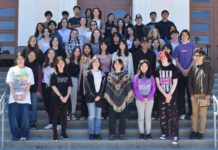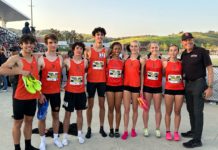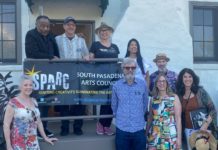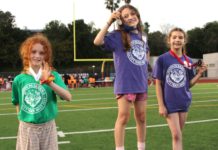I’m not concerned with you liking or disliking me. All I ask is that you accept me as a human being. – Jackie Robinson
In the Arroyo Seco, there is a historic baseball field named Jackie Robinson Memorial Field. The “field of dreams” honors one of the greatest ballplayers to ever play the game. But it is the same field Robinson was denied a tryout with the White Sox who conducted their spring training camp in Pasadena during the 1930s and 1940s.


In 1936, Robinson earned a place on the Pomona annual baseball tournament all-star team, which included future Hall of Famers Ted Williams and Bob Lemon. He was elected to the All-Southland Junior College Team for baseball and selected as the region’s Most Valuable Player.
On March 13, 1938, Robinson’s Pasadena City College team played an exhibition game at the Arroyo Seco ballpark. He had two hits in a 3-2 loss to the major league White Sox in 11 innings. In that game Jackie so impressed the White Sox team manager, Jimmy Dykes, he reportedly said: “If that boy was white, I’d sign him right now.”
On March 22, 1942, Robinson and Nate Moreland were allowed to warm up with the White Sox during their spring training camp in Pasadena. Dykes again passed on the talented Robinson referring to the “unwritten law which prevents negro players from participating in organized baseball.” He recognized Jackie’s talent but refused to give him a tryout with the team.
It would be another five years before Jackie Robinson would play Major League Baseball, becoming the first to break the color barrier in a sport segregated for more than 50 years.
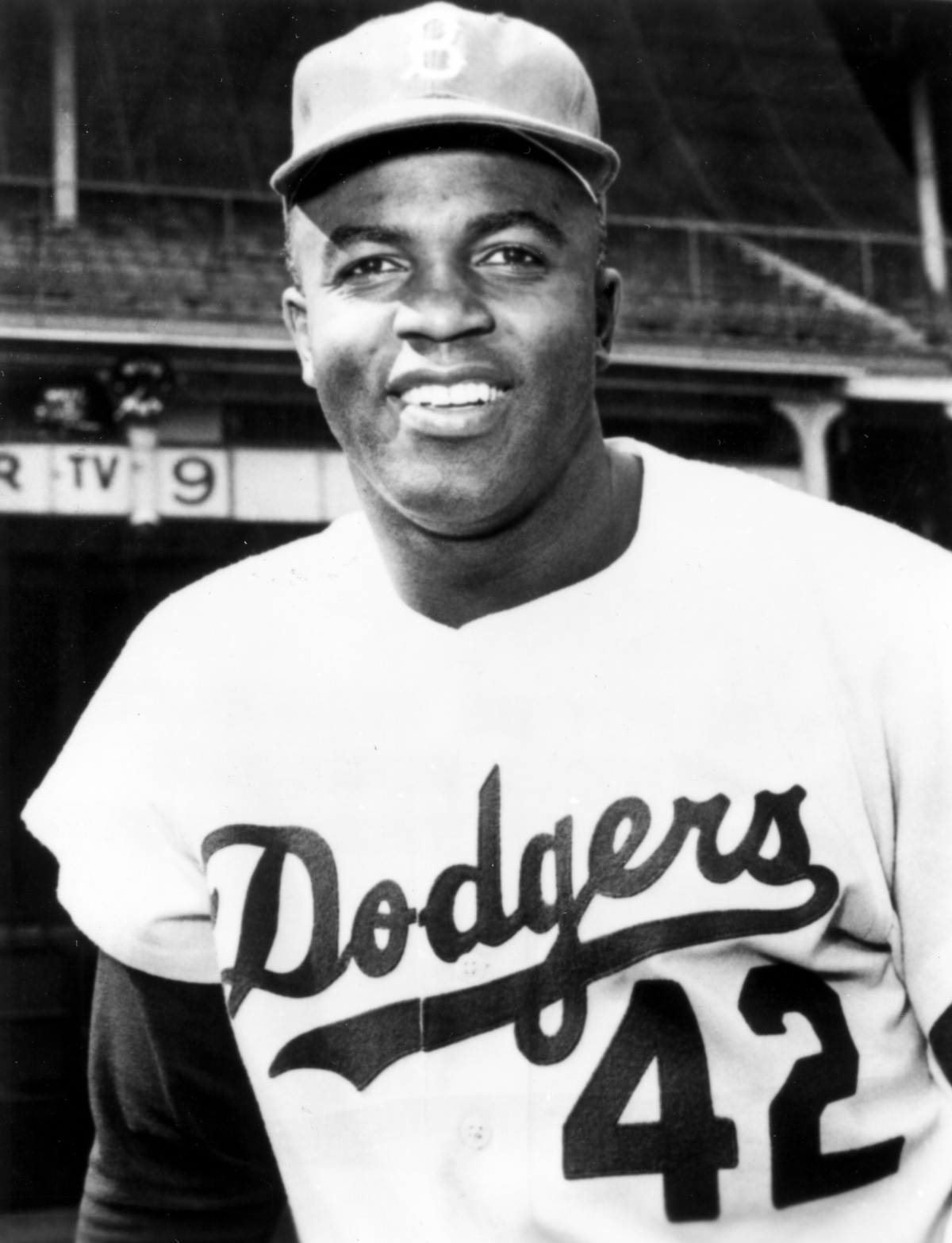
On April 5, 1947, Jackie Robinson would put on uniform No. 42 and play major league baseball for a 10-year career with the Brooklyn Dodgers. Robinson was named the MLB Rookie of the Year Award in 1947, was an All-Star for six consecutive seasons (1949 – 1954), and won the National League Most Valuable Player Award in 1949. He played in six World Series culminating in the Dodgers’ winning the 1955 World Series.
Robinson was hit by 72 pitches during his career, some in retribution for the color of his skin. His lifetime batting average was .311. He got on base nearly half the time he stepped up to the plate with an On Base Percentage (OBP) of .409.

Jackie Robinson opened up his personal life to the media as no other player has before or since. On January 14, 1950, Robinson visited his newborn daughter at the hospital.

On February 4, 1950, Jackie Robinson arrived in Los Angeles to begin work on the movie The Jackie Robinson Story (greeted by his son, Jackie Jr., age 3, and his mother-in-law, Zellee Isum).
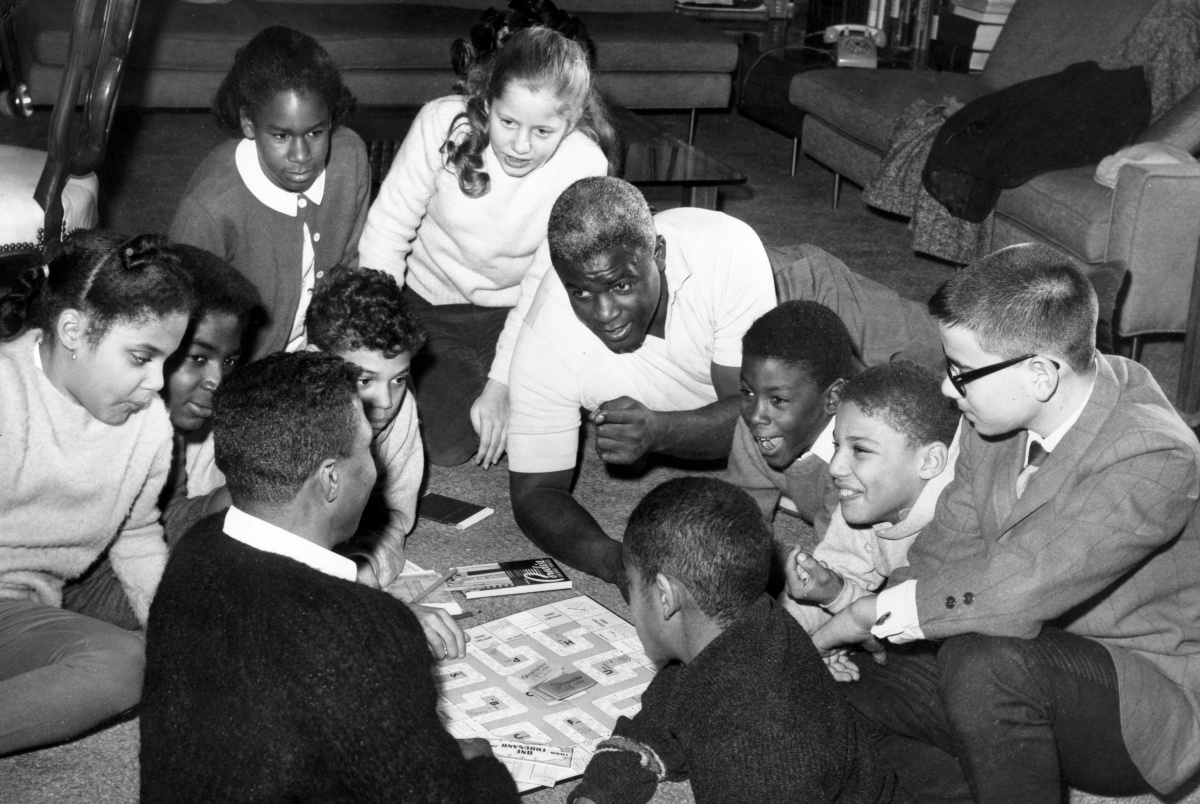
On February 20, 1962, Robinson invited the media into his home. He plays a board game in which the player can draw from two stacks of cards: one is “opportunity” and the other “experience.” Note: In the photograph above, upper center is Robinson’s daughter, Sharon, and her neighbor best friend, Christy Joyce. At his left is his younger son, David. Robinson is pointing at his older son, Jackie Jr.
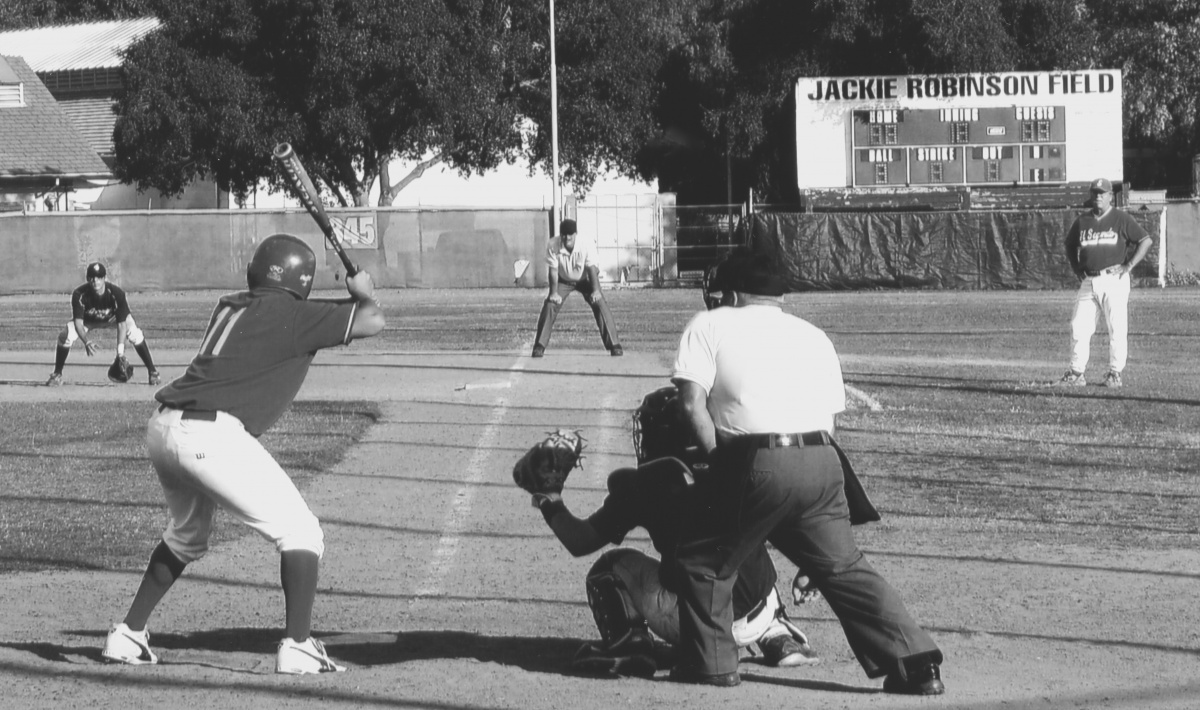
In the 1930s the Arroyo Seco baseball field underwent a major excavation to build a stadium made of reinforced concrete and arroyo stone. The improvements were agreed to by the City of Pasadena to accommodate the major league Chicago White Sox spring training camp. The stadium appears as it did more than 80 years ago.
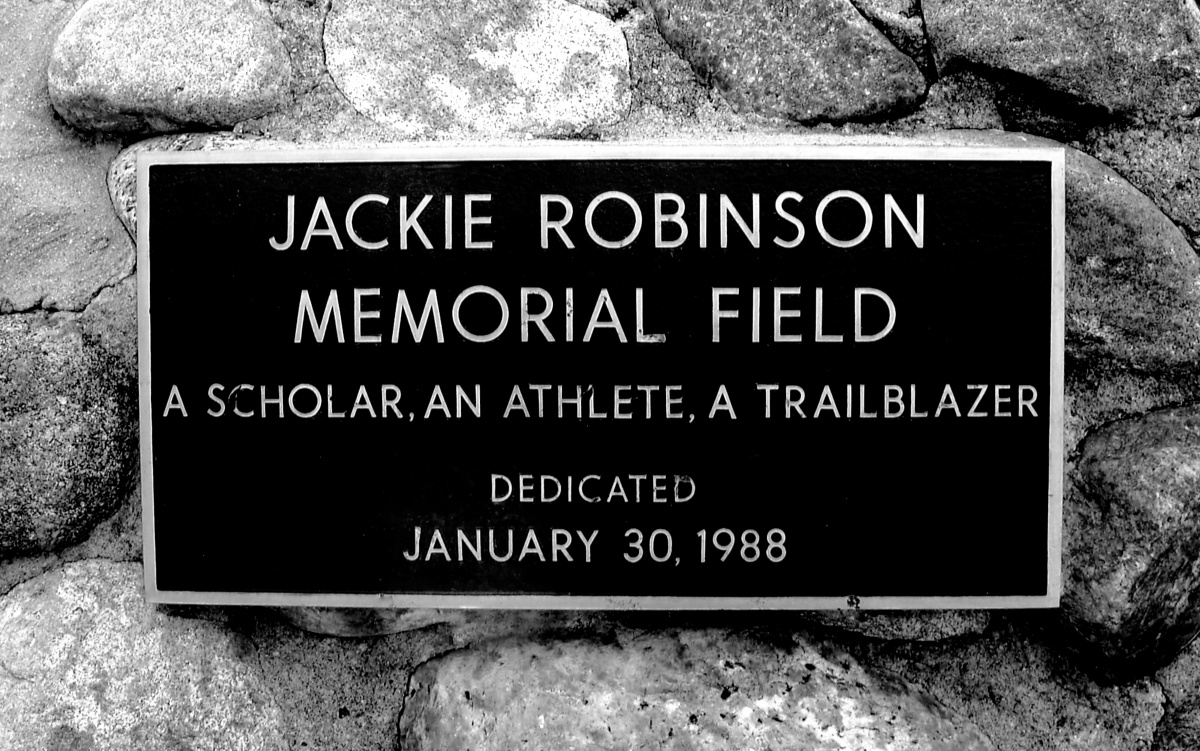
On January 30, 1988 the Arroyo Seco Stadium in Brookside Park was renamed Jackie Robinson Memorial Field in honor of the man who changed the game and influenced race relations in America.
Today, the ballplayers who charge the field in the Arroyo Seco take pride in knowing that one of the great men of the 20th century grew up locally and is forever the namesake of their field of dreams.
Public Film Screening Tonight
The Jackie Robinson Story
Tonight, the South Pasadena Public Library is showing the film The Jackie Robinson Story at the Community Center. See below for details.
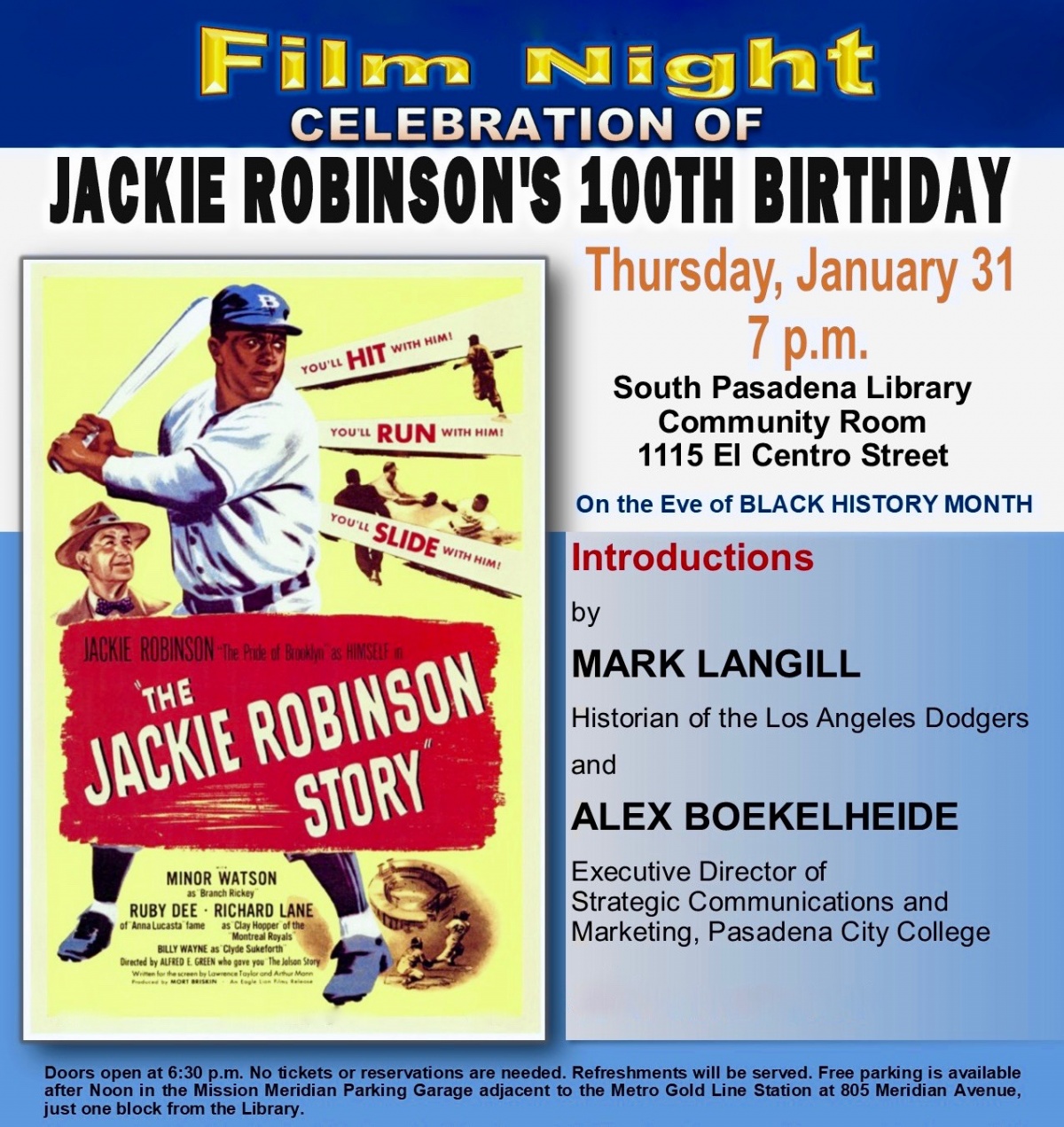




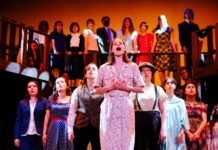

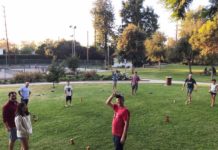


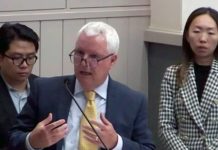
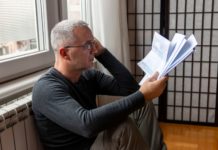

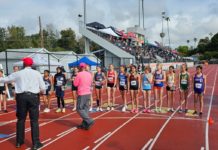


.png)







